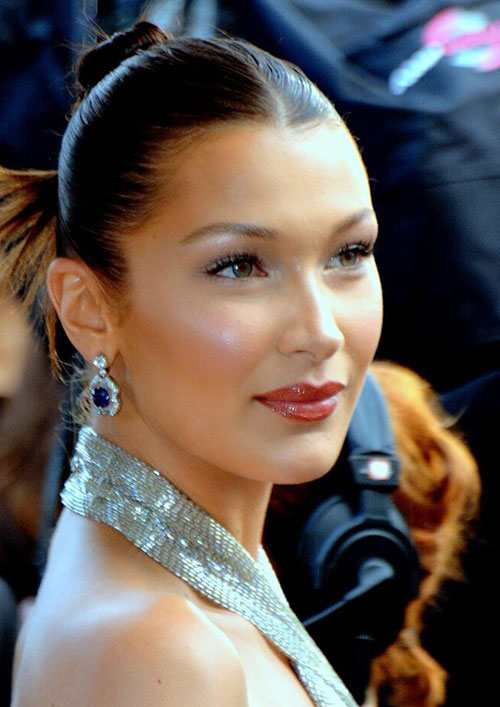Each day patients unhappy with their noses knock on plastic surgeon's doors with pictures in hand, asking their doctor the same hopeful question: Can you make me Bella's nose? Can you give me Jennifer Aniston's nose? Do you know how many times a month Kylie Jenner's nose is Googled? How about Kim Kardashian's nose? (A lot.) While each of these noses (and the faces they are attached to) are no doubt very pretty, a nose is not like a designer handbag you can just buy and carry around. No matter how skilled a surgeon is, they are bound by certain limitations.
The Art of Rhinoplasty: Balancing Patient Expectations with Surgical Limitations
Rhinoplasty, or nose job, is an intricate surgical procedure that has evolved into an art form over time. It blends the technical skills of a surgeon with an artistic vision to reshape and refine the nose's form and function. While rhinoplasty can significantly enhance facial harmony and boost self-confidence, understanding its possibilities and limitations is vital for setting realistic expectations.
Patient Expectations About Nose Shape
Patients usually approach rhinoplasty with a specific vision in mind. Depending on personal aesthetics and cultural norms, they desire an improved version of their noses – smaller base, higher bridge, more refined tip. Expert rhinoplasty surgeon Dr. Bora Ok explains that patients usually have very specific complaints about a certain part of the nose and tend not to look at their nose as a whole. "They may believe that the nasal tip is too low, the hump too pronounced, or nostrils too wide. When concentrating on a specific part, they may miss problems elsewhere when the nose should be considered holistically," he says.

© Georges Biard, CC BY-SA 4.0,
What is the Perfect Nose?
Another common patient behavior is bringing photos of celebrities, hoping to attain the "perfect" nose shape similar to their idols. However, it is essential to remember that every individual's facial structure is unique, and the objective of rhinoplasty is not to alter your face radically but to enhance your inherent features and bring a harmonious balance to your face. A skilled surgeon always aims to create a natural-looking outcome that complements your unique facial attributes rather than mimicking someone else's features. A nose that does not fit your features is bound to look not quite right —no matter how beautifully shaped it may be. In other words, there is no perfect nose shape that works for everyone.
Still, Dr. Bora Ok encourages patients to explain in detail the type of nose they want. "When a patient is outspoken about the exact shape they have in mind, we can talk about how realistic that expectation is and how likely it is to fit with the rest of their features," he says. "Then, we can discuss what may or may not work for that patient."
Surgical Limitations When Shaping the Nose
While rhinoplasty is a versatile procedure capable of making impressive changes to the nose's size and shape, it is not without limitations.
One crucial limiting factor is the patient's unique anatomy. Factors such as skin thickness, the strength of the cartilage, the width of the nasal bones, and the overall facial structure can limit what changes are possible. The surgeon has to work within these constraints to create a result that is not only aesthetically pleasing but also functional and sustainable. Especially ethnic rhinoplasty and thick-skin rhinoplasty patients require advanced knowledge and exceptional surgical skill to create the best possible results.
Moreover, healing and scarring are inherent processes that occur after any surgical procedure, including rhinoplasty. Individual variations in healing can influence the final result and are not entirely within the surgeon's control.
The Balance Between Patient Expectation and Surgical Limitation: Trust Your Surgeon
The art of rhinoplasty lies in the delicate balance between a patient's expectations and surgical limitations. A successful outcome heavily relies on clear communication and understanding between the patient and the surgeon.
During the consultation phase, the surgeon should clearly explain what can be realistically achieved, considering the patient's unique facial features and anatomy. Some surgeons can provide a visual representation of the expected outcome using imaging technology, but it's important to remember that these images are just predictions and not guarantees. In fact, some surgeons do not prefer using 3D computer modes because they think it may give the patient the wrong idea and build up expectations.
Patients should enter the consultation process with an open mind and be prepared to adjust their expectations based on their surgeon's guidance. Trust in their surgeon's expertise and understanding that the outcome will be a marriage of their wishes, and the surgeon's professional recommendations is crucial.
To conclude, rhinoplasty is a delicate blend of artistry and surgery, relying heavily on patient-doctor communication, technical skills, and aesthetic judgment. Approaching this procedure with realistic expectations and understanding its limitations improves patient satisfaction. After all, the ultimate goal of rhinoplasty is to create a natural, balanced aesthetic that aligns harmoniously with the unique features of each individual. So, to go back to the question in the title, can you get Bella's nose? Well, not impossible, but improbable. What you can get, however, is a surgeon that you trust and a nose that works well with the rest of your face and makes you feel your best.
Click here to schedule a consultation with expert rhinoplasty surgeon Dr. Bora Ok.
